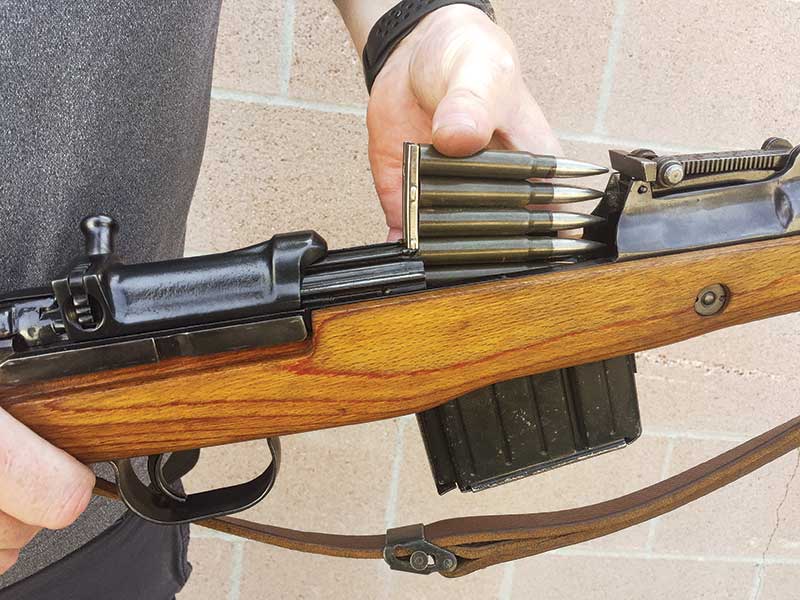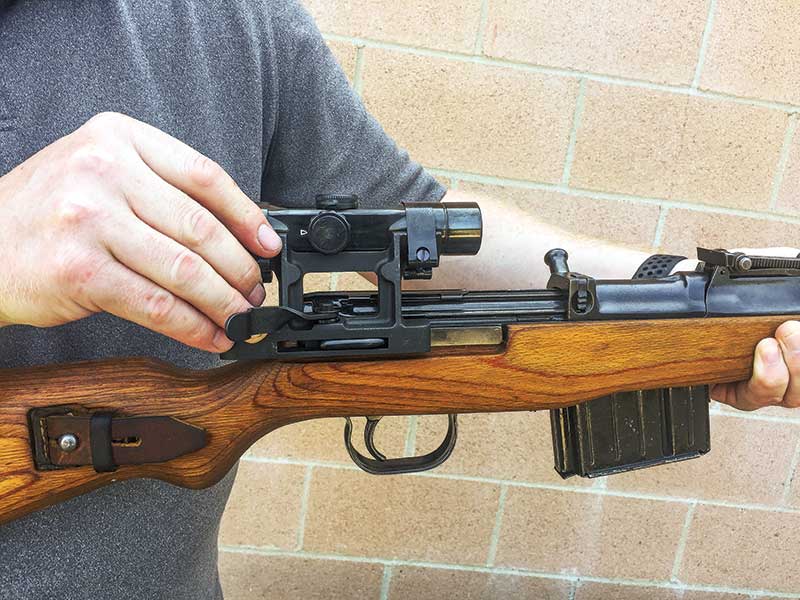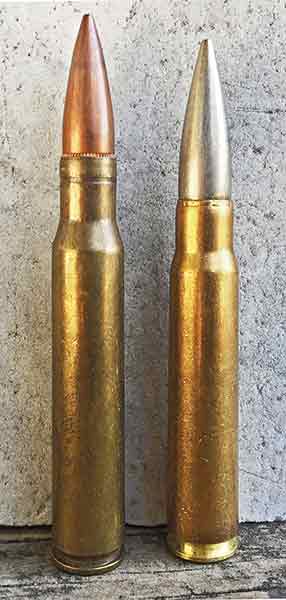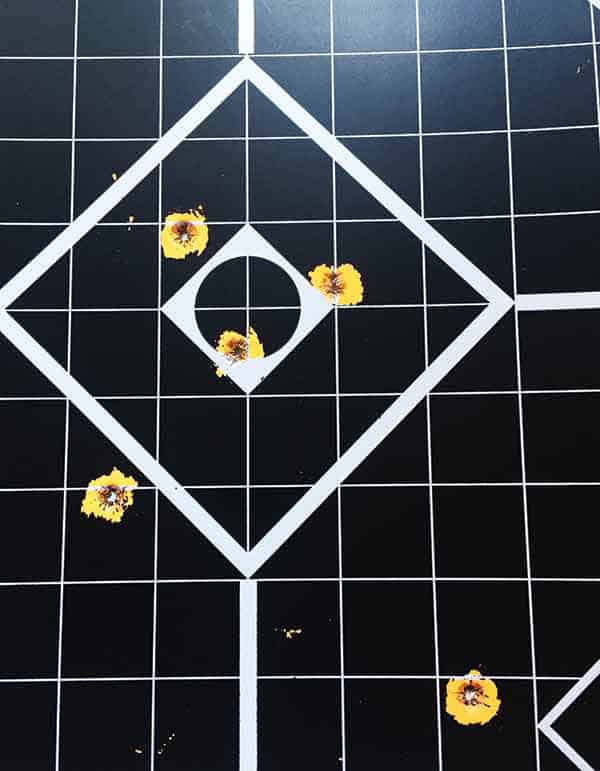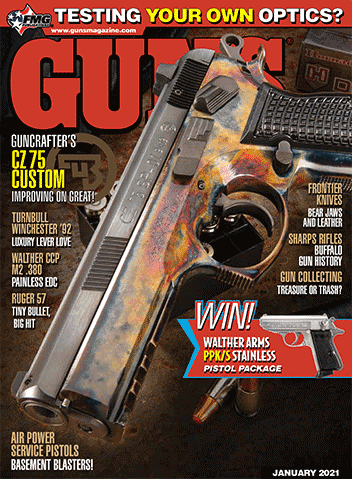The G43: WWII’s Runner-Up
Germany’s top battle rifle combined
innovation with efficiency
“This is quite a gun. Quite a gun. I did a lot of choppin’ in the war with a gun like this.”
This quote took place in the movie Suddenly. Although the nominal stars of the 1954 thriller about a failed presidential assassination were Frank Sinatra and Sterling Hayden, a major player in the proceedings — at least for gun guys — was a scoped and modified German G43, the weapon of choice for the mercenary assassin played by Sinatra.
Self-Loaders On Both Sides
The M1 Garand obviously wasn’t the only semi-auto battle rifle of the Second World War. There were several — the most notable and heavily employed being the Soviet Union’s SVT-38 and SVT-40 and Germany’s G41 and G43.
The Walther-designed G43 was arguably the most successful on the Axis side. Germany’s “other” more revolutionary Sturmgeweher 44 — the select-fire godfather of the “assault rifle” concept chambered to the intermediate 7.92×33 Kurz — is justly credited as groundbreaking. Of course, the STG 44 was late in arriving to all the action. The G/K43 is certainly a more “rifle-like” item in terms of conventional appearance, and classifies as a “battle rifle,” being chambered to a full-length, full-power 7.92×57 cartridge.
It was a substantial improvement over its predecessor, the G41, and featured a redesigned short-stroke piston gas system and weighed about 1-1/2 lb. less. And although the G43 is often referred to by the “G” prefix, the Germans changed things to “K43” in 1944.
By any model designation, the G/K43’s design owed much to the Soviet SVT-40, of which the Germans had tons of captured specimens to inspect. However, aesthetically the G/K43 was arguably sleeker and more attractive than its clubby Soviet counterpart. This isn’t surprising as ergonomics and beauty are seldom associated with Soviet small arms of the period.
The respective cartridges of all three self-loaders — Axis and Allied — represent the most potent of WWII rifle rounds. The M1 employed a 150-gr. .30-06 at 2,800 fps while the G43’s 7.92×57 featured a 198-gr. FMJBT at 2,600 fps. The Soviet 7.62x54R generally propelled a 150- or 181-grain spitzer at 2,800 or 2,600 fps.
We’ll leave it to ballistic obsessives to determine which was the superior number, but all three were in the top-tier of period small arms cartridges.
Bells And Whistles
Our particular G/K43 was courtesy of its owner, Edward Komperda. It was in wonderful condition and Edward was kind enough to include several original accoutrements with it — magazines, magazine pouches, oiler, side-mounted sling, etc., but the corker was an original ZF4 4X scope and QD mount.
All the rifles featured a mount rail. According to W. Darren Weaver in his exhaustive, 361-page, lavishly-illustrated Hitler’s Garands: German Self-Loading Rifles of World War Two (Collector Grade Publications), “Clearly the intent was eventually to issue all G43s with telescopic sights … the G43 concept spawned parallel optical sight developments which resulted in the Zielfernrohr 4 fach, or ZF4 scope, and its peculiar mount.”
The reticle was the signature Germanic 3-post arrangement. Those pointy posts are thick and challenging for us elderly American sporting-rifle types who cut our teeth on fine crosshairs and Duplex reticles. One other Euro-touch: The arrangement results in a higher-mounted scope than many heads-down Americans are used to.
Our 198-grain ammo for the G43 was courtesy of Serbia’s Prvi Partizan (PPU). It did not measure up to the figures given for the original heavy German service load, averaging 2,150 fps.
However, we also had some of Edward’s handloads, employing a lighter 175-grain PPU spitzer in PPU cases backed by 49 grains of Hodgdon 4895, which averaged 2,470 fps. It’s a bit on the mild side for this bullet weight, which is fine with Edward, as he’d rather not have his brass beaten up on ejection.
Shooting the G/K43
In terms of felt recoil, our G/K43 was fairly pleasant, somewhat less than an M1 when using the 198-grain PPU commercial stuff. One ahead-of-its-time feature of the rifle was the Durafol handguard — an early German plastic material which, as we found, does a pretty good job of heat dissipation. Although the issue magazines were 10 rounders, they could be charged quickly using 5-round stripper clips.
Dimensionally, the G/K43 was fairly close to the revered M1 Garand: 9.7 lbs., a 43.8″ OAL and a 21.5″ barrel.
As a serious sniper’s tool, the G43 certainly wasn’t in the same class as its scoped turnbolt contemporaries — the K98k, Mosin-Nagant or Enfield No. 4, let alone a Springfield M1903A4. In fact, Weaver states, “As a dedicated sniper rifle, the mass-produced G/K43 was a total failure.”
Our range results bore out this harsh observation. Using PPU 198-grain ammo the best overall 5-shot group using the iron sights at 50 yards was superior to the scoped group at the same yardage, provided you discount the 3/4″ 3-shot cluster in the “X-ring.” At 100 yards, groups were about identical. In the case of the iron sights, this was perhaps more a function of Edward’s younger eyes! At any rate, our best scoped group was a hair over 3″, provided you exclude a seriously errant 5th shot flyer.
Caveat
In all fairness, however, sniping during the Second World War usually involved considerably closer yardages than some of the mind-boggling distances attributed to Vietnam-era snipers, let alone later Iraq or Afghanistan instances. Assuming 100 to 300 yards to be “about right” for WWII, the scoped G/K43 is generally adequate, and the semi-auto feature certainly can’t be discounted in situations involving multiple target opportunities.
At least the two highest scoring German snipers of WWII employed the G/K43 successfully on occasion. Matthaus Hetzenauer used a G/K43 with a 4X scope as well as a scoped K98k to amass 345 kills on the Eastern Front. Josef “Sepp” Allerberger who obtained 257 kills also on the Eastern Front, used a K98k primarily, but toward the end of hostilities, employed the self-loader as well.
However, the metallic sights are very effective in conventional small unit engagements and the G/K43’s rapid-fire capabilities certainly gave German infantrymen a welcome boost in the face of superior numbers, particularly in the East.
Final Analysis
Despite its shortcomings, the G/K43 exhibited some fairly remarkable features for a mass-produced military rifle such as an adjustable trigger and a hammer-forged barrel. The 2-stage trigger on our test sample broke at a surprisingly tractable 4.5 lbs.
The G/K43 served from 1943 to 1945 in various theaters and over 402,000 were built. It’s interesting to speculate the eventual outcome of the war had the majority of German troops had one from the get-go. It may have altered their doctrine of the MG42 being the centerpiece of small-unit firepower in which K98ks played a supporting role — but it probably wouldn’t have changed the eventual outcome.

